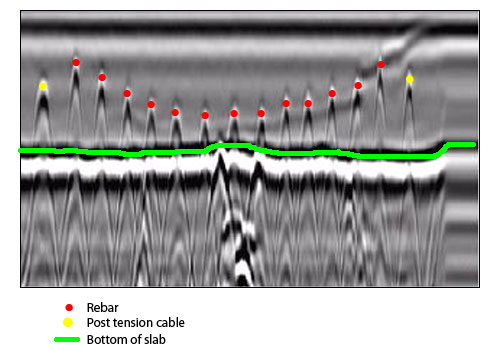Concrete Scanning: A Crucial Action In The Direction Of Ensuring Architectural Honesty and Safety And Security
In the realm of building and construction and infrastructure upkeep, the value of concrete scanning can not be overemphasized. By using innovative modern technology and methods, concrete scanning serves as a pivotal device in making sure that the stability and security of bridges and structures are maintained to the greatest requirements.
Value of Concrete Scanning
Concrete scanning plays an essential duty in guaranteeing the architectural integrity and safety and security of structures and framework projects. By making use of innovative technologies such as ground-penetrating radar (GPR) and electromagnetic induction, professionals can non-destructively evaluate concrete frameworks to identify possible defects, voids, embedded items, and support layout. This procedure makes it possible for very early detection of anomalies that can jeopardize the stability of a framework, protecting against costly damages and making certain the safety of occupants.
Before boring, cutting, or coring into concrete, scanning helps identify the exact places of rebar, post-tension cables, and various other ingrained aspects, minimizing the risk of unintentional hits that could lead to architectural weaknesses. Furthermore, concrete scanning help in quality control by verifying the thickness of concrete covers and discovering any kind of discrepancies that might influence the total longevity of the framework.
Modern Technology for Concrete Evaluation

Advantages of Very Early Detection
Prompt discovery of architectural problems can dramatically mitigate threats and ensure the long life of building and construction jobs. By recognizing possible problems early on in the building procedure, stakeholders can take aggressive measures to address problems prior to they rise right into larger and a lot more costly troubles. One of the vital advantages of early discovery is the prevention of architectural failures, which can posture significant security dangers and cause job delays and financial losses.
In addition, very early discovery enables for prompt fixings and upkeep, which can assist extend the life-span of the structure. By resolving problems immediately, construction groups can stay clear of costly repair work or perhaps the demand for early substitute of structural components. This proactive method not just saves time and cash however likewise improves the total security and durability of the building and construction job.
In addition, early discovery can boost task planning and decision-making by supplying stakeholders with useful insights right into the problem of the structure. Armed with this info, project managers can make educated selections pertaining to building products, techniques, and timelines, causing much more effective and effective project results.
Making Certain Structural Security
Guaranteeing the architectural stability of a building project is extremely important to its safety and longevity. Concrete scanning plays a critical duty in guaranteeing structural stability by spotting potential concerns such as voids, delamination, or reinforcement corrosion that can endanger the integrity of the framework over time.
By utilizing innovative scanning innovations like ground-penetrating radar (GPR) and electro-magnetic induction, building specialists can non-invasively inspect concrete frameworks to determine areas of issue below the surface. This positive approach allows for the very early discovery of problems or weak points, allowing prompt repair work or reinforcement to stop architectural failures.
Normal concrete scanning during different construction stages and throughout the life process of a structure can assist preserve its stability, minimize dangers, and make sure the security of occupants. By focusing on architectural security through concrete scanning, building and construction projects can boost their durability and longevity, ultimately contributing to greater safety and security and durability.

Preventing Critical Failures
To secure against disastrous occasions, careful monitoring our website and proactive maintenance are necessary in avoiding critical failings within structural frameworks. Identifying prospective issues prior to they rise is key to avoid architectural failings. Applying regular inspections, such as concrete scanning, can disclose covert issues like voids, fractures, or corrosion that might endanger the integrity of a structure. By using innovative scanning modern technologies like Ground Permeating Radar (GPR) or Concrete X-ray, designers can non-destructively evaluate the condition of concrete and identify powerlessness that require reinforcement or repair work - RainierGPR Service Areas.

Final Thought
Finally, concrete scanning plays an essential role in making certain structural stability and safety by using advanced innovation for very early detection of possible concerns. This proactive approach helps avoid important failures and guarantees the security of structures. It is crucial to focus on concrete examination as a conventional look at this web-site practice to shield the durability and safety and security of buildings and facilities.
Concrete scanning plays an essential duty in making certain the architectural stability and safety and security of buildings and framework jobs. Furthermore, concrete scanning help in quality control by verifying the density of concrete covers and detecting any kind of discrepancies that might affect the general toughness of the structure. Concrete scanning plays an essential role in guaranteeing architectural stability by identifying potential issues such as spaces, delamination, or support deterioration that might endanger the honesty of the structure over time.

In conclusion, concrete scanning plays a vital duty in ensuring architectural stability and safety and security by using advanced technology for very early discovery of possible problems.